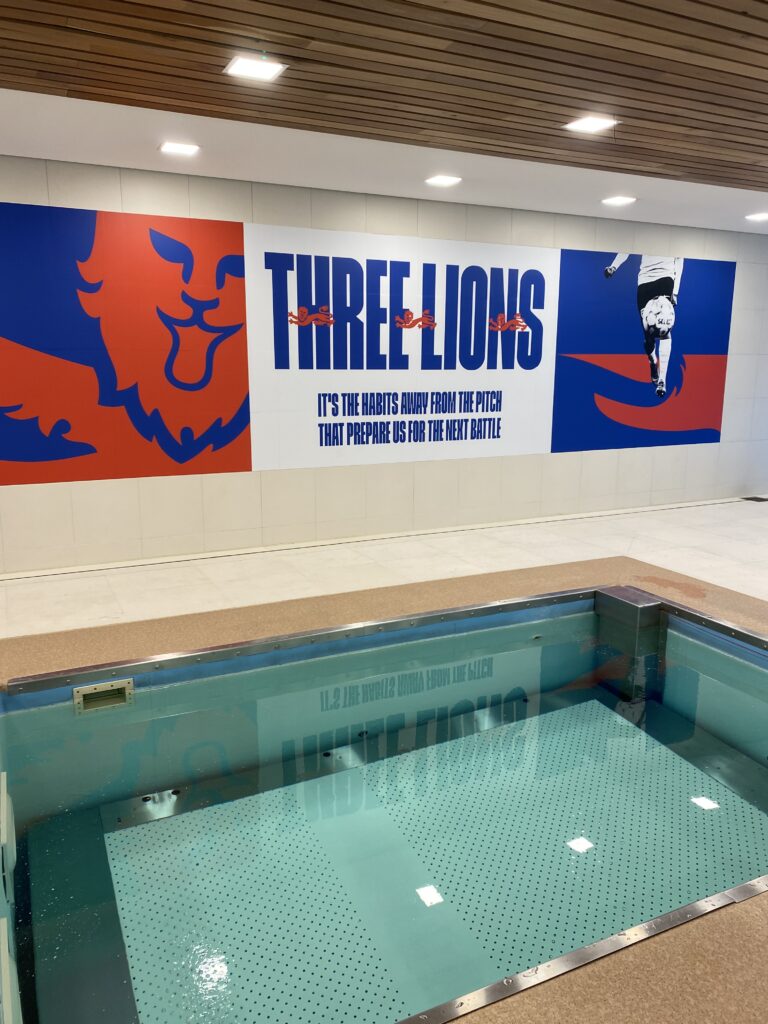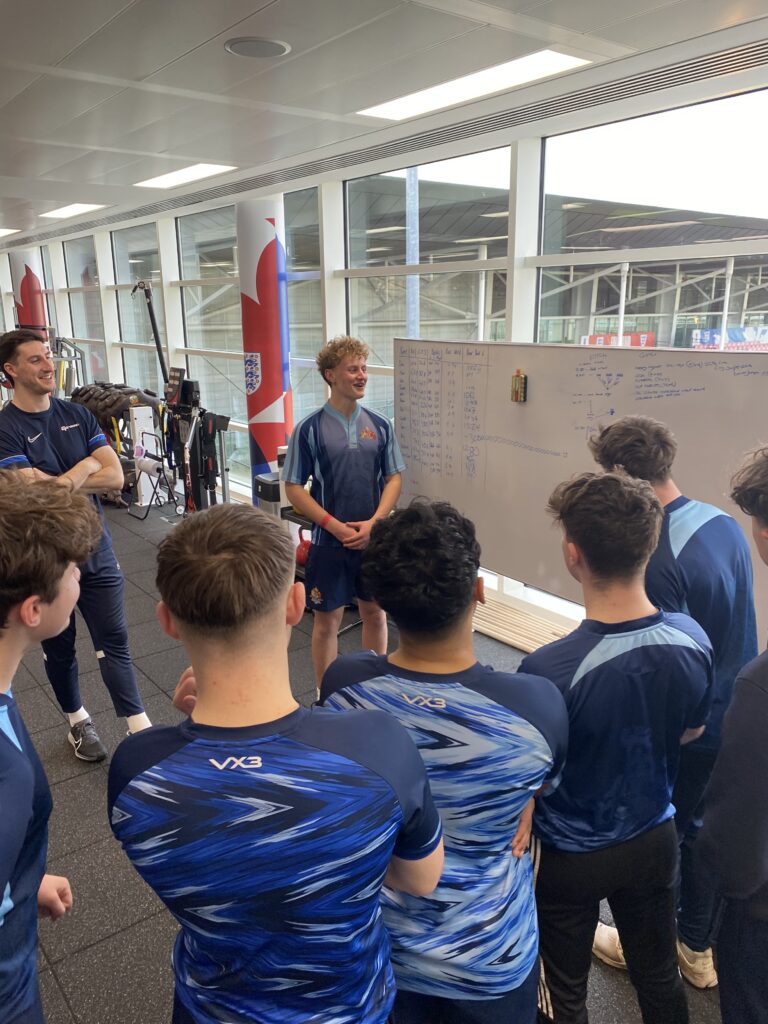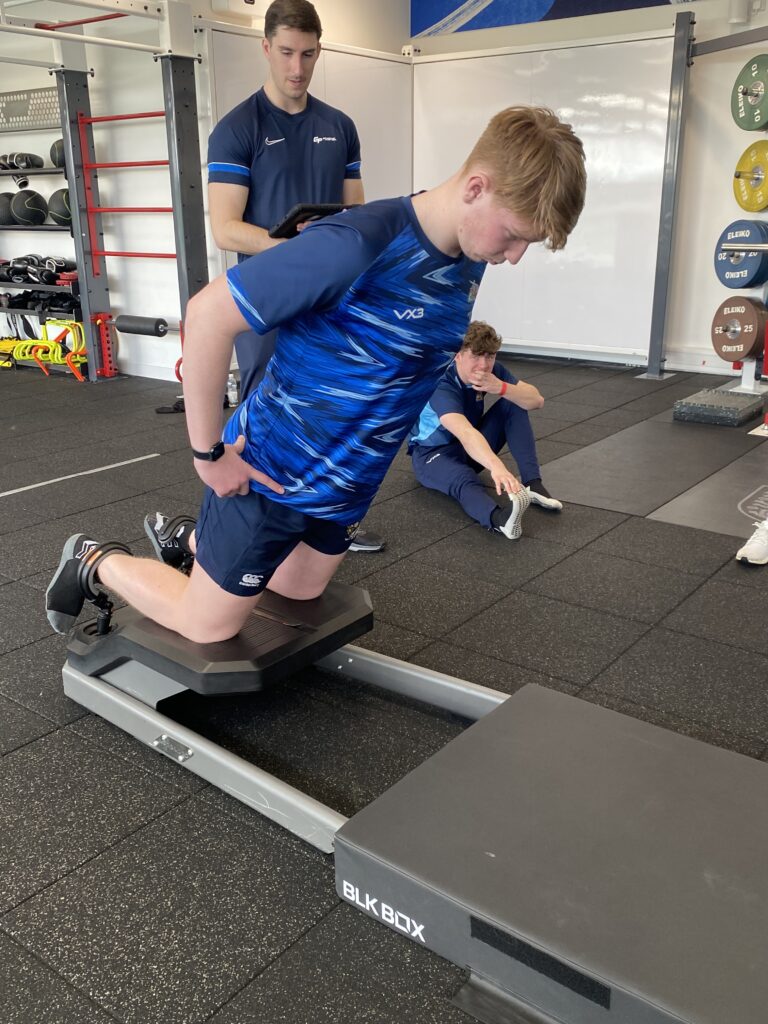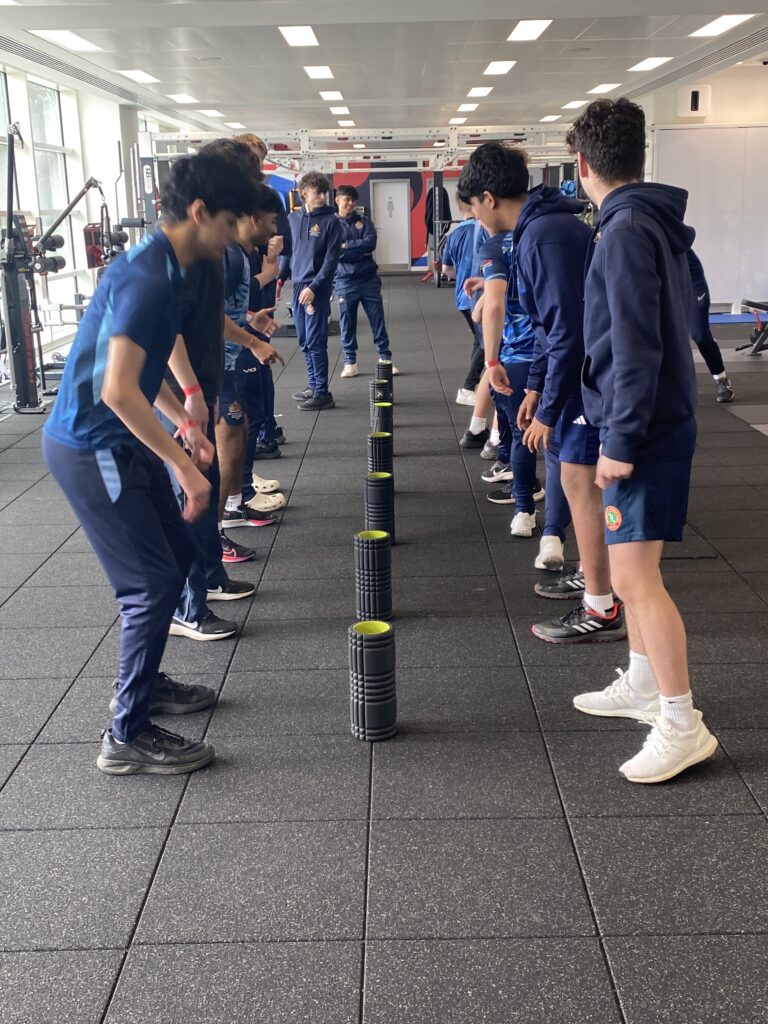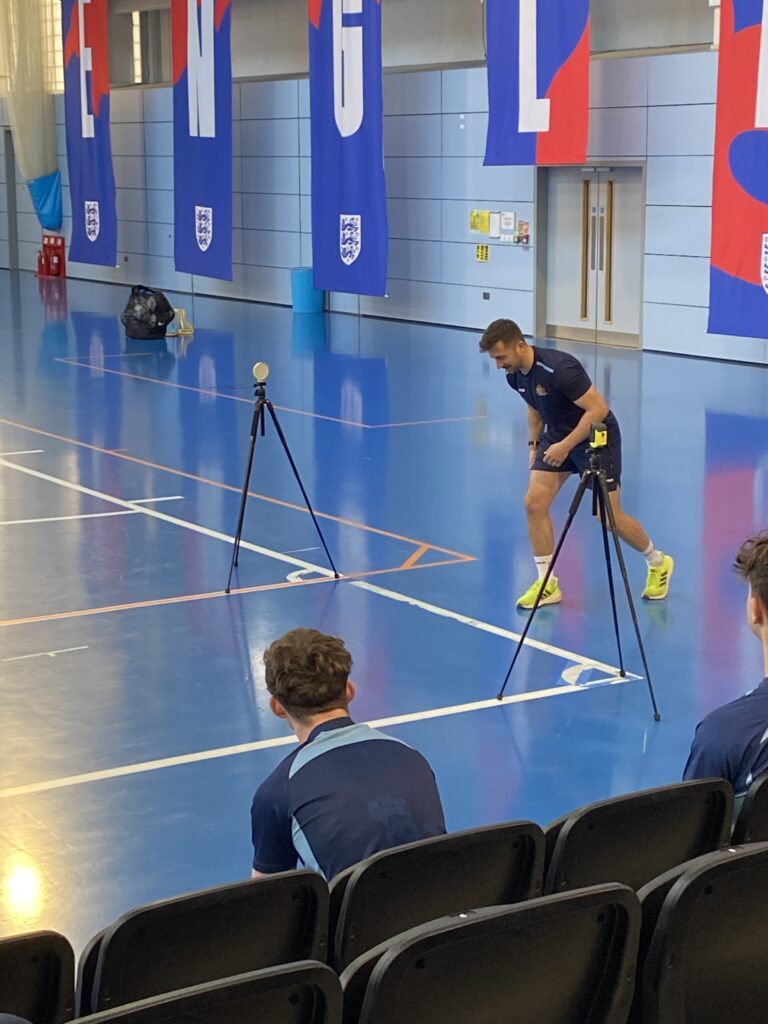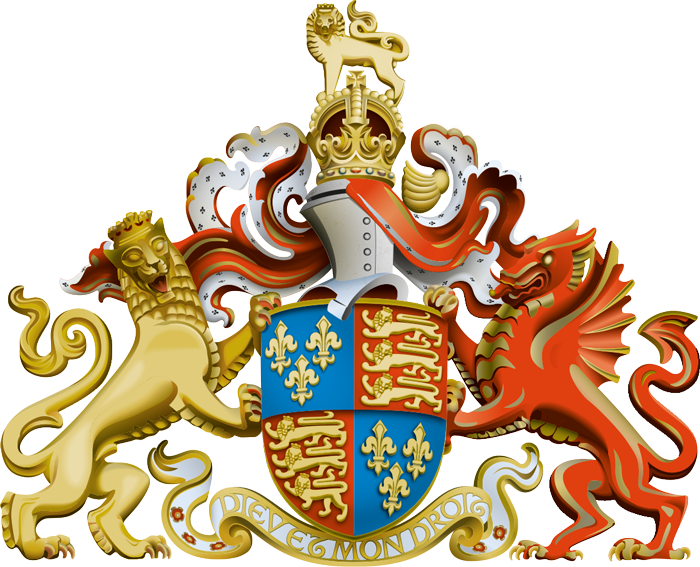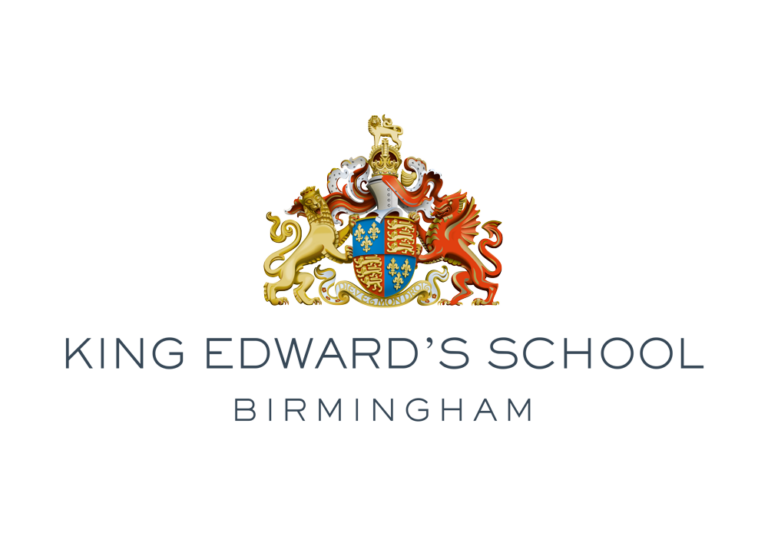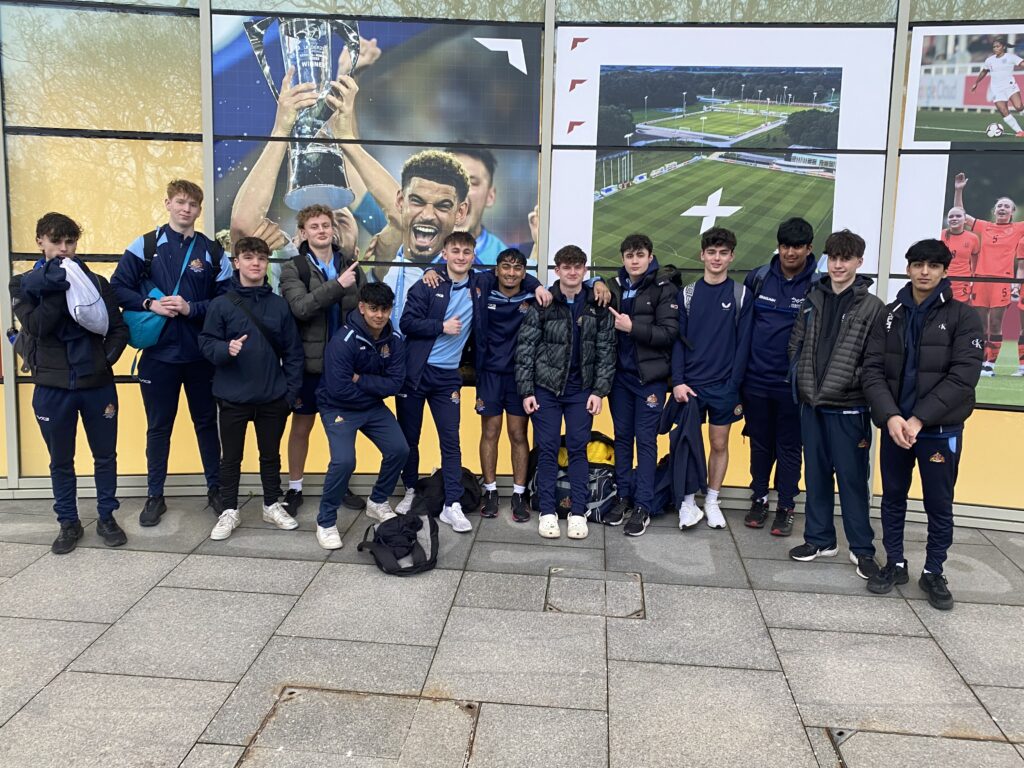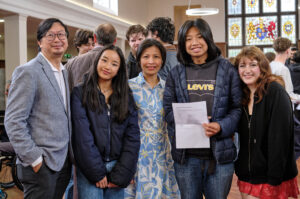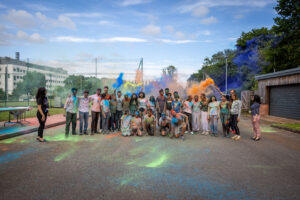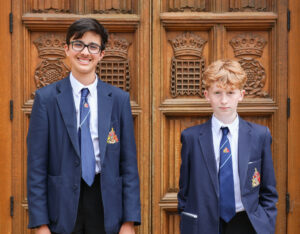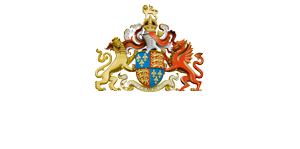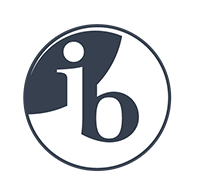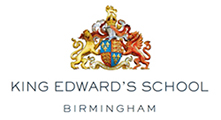On the 27 February both the Higher Level and Standard Level Sports Science classes were lucky enough to visit St George’s Park. Built in 2012 and located in Burton upon Trent, St George’s Park serves as the national football centre for England and is the base for all of England’s 28 national teams, from the senior squad down to the youth levels. The facility boasts state-of-the-art facilities including multiple Wembley replica pitches, sports science and medicine centre and much more. We were all very excited when we heard we were going to be visiting St George’s Park and all learnt a lot from the trip whilst also having a lot of fun.
We started the morning in the indoor futsal arena. Futsal is a variant of football played on a smaller, indoor court with a smaller heavier ball. To begin, we warmed ourselves up both physically and mentally starting with some dynamic stretches that increased in intensity. We then played a variant of stuck in the mud with footballs which were used to increase our heart rate and get us properly running around. After this we were then introduced to the Hoff Circuit by James (who was a qualified sports scientist and educator at St George’s park) and led the activities throughout the day. The Hoff Circuit combines both sport specific drills with improvement in cardiovascular endurance, strength and overall fitness. For football it is extremely important as modern footballers have to be extremely fit and have high endurance levels. After doing several rounds of a pre-made Hoff Circuit that was challenging but enjoyable, we were tasked to alter one of the stations in the circuit. This was brilliant because after participating in the drill like an athlete we now had to look at it like a coach.
Following this we were put through our paces with some physical testing. Testing is really important in sport as it allows coaches and players to identify strengths and weaknesses and see where improvement can be made. Firstly we were tasked with completing a standard fitness test for footballers, a 1km time trial. As we were completing it inside the futsal arena, it was slightly different to doing it on a full size football pitch however we were all keen to do our best and there was some high levels of competition amongst the boys. After recovering from this, James led us through some sprint exercises and the technique of sprinting in preparation for a 30m sprint test and a short agility test. It was really useful to look at the specific mechanics of sprinting and see how it linked to what we had learnt in class. Again, there was much competition amongst the group here and even Mr Caviezel-Cox had a go at the sprinting (after a significant amount of stretching). All of these activities in the futsal arena were very enjoyable however tiring and so I think we were all glad to hear that we had a break for lunch.
After lunch we were lucky enough to have a look at the full sized indoor Wembley replica pitch. An extremely impressive part of St George’s Park that is an exact copy of the famous football pitch in London even down to grass length and type. Our very own Mr Macdonald however was no stranger to the pitch as he had previously done some training on it as a English Rugby Premiership referee. The facility is so high tech that even the temperature and humidity levels can be altered to match the ones in London! James then took us to the multi-purpose gym for some more physical testing and to take part in a case study. We first had to warm-up again after the break for lunch but then got right back into action. First up was a counter movement jump that can be used to measure multiple things. Using force plates that were built into the floor of the gym, we could measure our jump height which is useful to know when looking at athletes’ power and explosiveness capabilities. Again Mr Caviezel-Cox participated in this and they ended up being an intense ‘jump-off’ between himself and Rory Moffitt with the former just about edging a victory. Following this we used another piece of fancy equipment to look at hamstring strength. We also calculated, using our weight, our relative strength of hamstrings and that was quite interesting to see and then compare with professional athletes. To finish our physical testing for the day we completed a 6 second peak power test on Watt bikes. This is a very short and intense test to see how much power one can produce on a Watt bike. After several attempts (including a change of bike) I came out on top. The numerous tests throughout the day had been quite vigorous and put a lot of strain on our bodies however we were fortunate enough to be able to aid our recovery by doing a hydrotherapy recovery session.
The recovery part of the day was perhaps the most enjoyable. After changing into a swimming kit we started out the session in the indoor pool which is maintained at about 26 degrees celsius and has a floor that can change height. In the pool we first relaxed our bodies by doing a series of movements and stretches using the resistance of the water. We then relaxed our minds by playing a series of ball based games in the pool. It was then time to get serious with some hot-cold water therapy. This involved spending 1 minute in a hot tub at 38 degrees and then the next minute in a cold plunge pool at 11 degrees. We did five cycles of this and it was tough. Some lads even sang in solidarity to get through their minute in the cold pool. Even though it was very tough the benefits of it were massive and could definitely be felt by the lads both during and after. We were also able to spend some time on the underwater treadmill that is mainly used for injury rehabilitation.
Overall the trip was brilliant and very useful in expanding our knowledge of sports science and being able to see practical applications of the theories we learn in class. A huge thank you to both Mr Macdonald and Mr Caviezel-Cox for making this trip possible!
Daniel Bassett (Divs)
